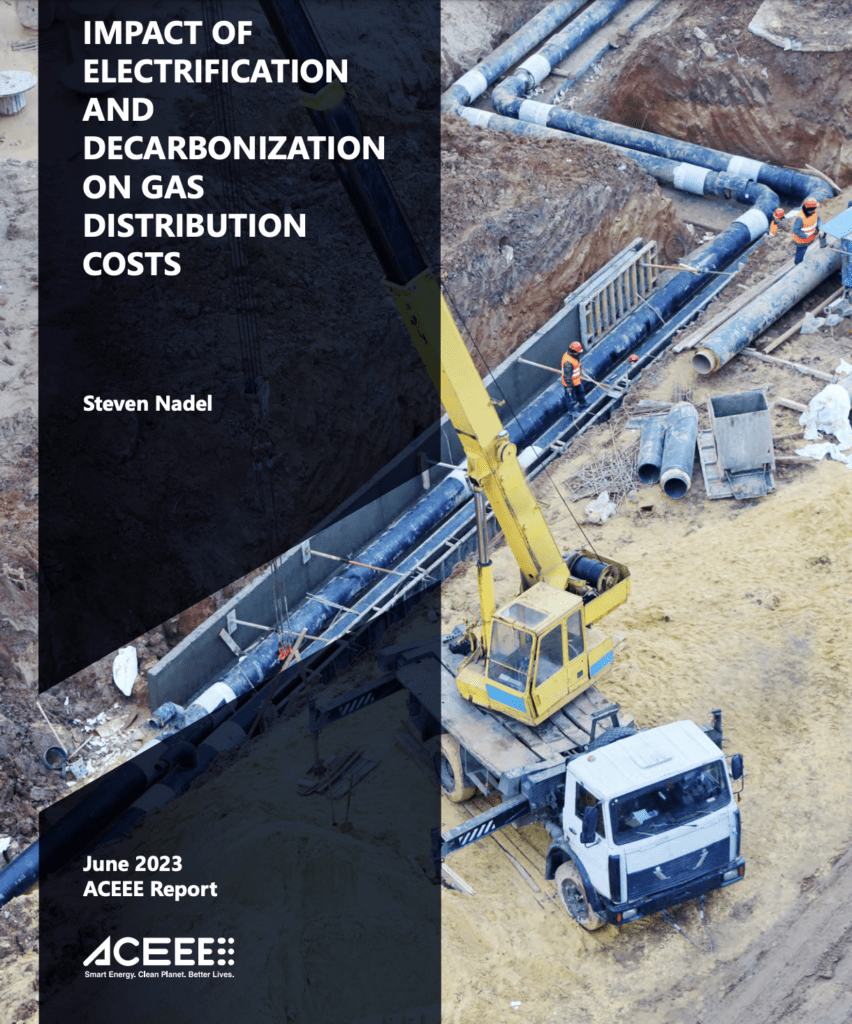Resource Library
ACEEE Report: Impact of Electrification and Decarbonization on Gas Distribution Costs
Overview
This study finds that gas utility costs per customer in 2040 will increase from 15% to more than 500% relative to 2023 levels. The report recommends that policymakers and regulators begin planning now to minimize future costs to gas utility customers.

Increasingly, governments, utilities, and many businesses and consumers are looking to
dramatically reduce carbon emissions in order to protect the climate and deliver benefits to
communities and households. One significant source of carbon emissions is burning natural
gas in homes and businesses to provide heat and hot water, to cook, and for other uses.
According to the Energy Information Administration (EIA), natural gas accounts for 34% of
U.S. energy-related carbon emissions including 28% of residential emissions and 23% of
commercial sector emissions (EIA 2022).1 In order to dramatically reduce these emissions,
two major approaches have been proposed: electrification and use of alternative fuels.
Electrification involves replacing fossil fuel-fired equipment with equipment that instead uses
electricity. Efficient electric appliances reduce pollution in most of the United States today
and will have an even more positive impact in the future as coal-fueled power plants retire
and clean electricity generation increases. With electrification, fossil fuel-fired equipment
might be replaced with high-efficiency electric heat pumps for space heating and cooling,
heat pump water heaters, induction stoves for cooking, and heat pump clothes dryers.
Another approach is for gas utilities to distribute alternative fuels with low net carbon
emissions to its customers. This approach would involve partially or completely replacing gas
in the distribution system with alternative fuels such as biofuels, hydrogen or synthetic
natural gas produced from renewable sources. Hydrogen has zero carbon emissions if the
hydrogen fuel is made with zero-emissions electricity. Biofuels and synthetic natural gas do
release carbon dioxide when they burn and methane (also a greenhouse gas) when they
leak, but some biofuels could potentially displace equivalent emissions in their production.
For example, biofuels can be made from plants that remove carbon dioxide from the
atmosphere as they grow, or can be made from animal excrement or landfills, which, if not
used to produce fuel, would instead release methane into the atmosphere as the waste
breaks down in the environment. However, most of these fuels do have some carbon
emissions that will need to be offset and their potential production falls far short of current
natural gas usage (Nadel 2022). We also note that this discussion applies to fuels with very
low emissions; mixing moderate amounts of these fuels with natural gas will retain most of
today’s emissions from natural gas.
Energy efficiency measures, such as building envelope improvements, can play an important
role with both electrification and alternative fuels. The more that energy efficiency is employed, the less electricity and alternative fuel that is needed, reducing both operating
costs and the amount of capital investment needed to supply electricity or alternative fuels
(Nadel 2022; Nadel and Fadali 2022).
Related Resources
Passive House Podcast: Mark Siddall, LEAP
In this episode, LEAP architect Mark Siddell walks us through the eight stages of the RIBA Passive Haus Overlay.
NEEP: Best Practices for Remote Virtual Inspections (RVI)
Remote Virtual Inspections (RVI) are a method of inspection that uses technology to allow inspectors or certified Third-Party Inspection Agencies (TPIA) to conduct inspections while not being physically present at the inspection site.
